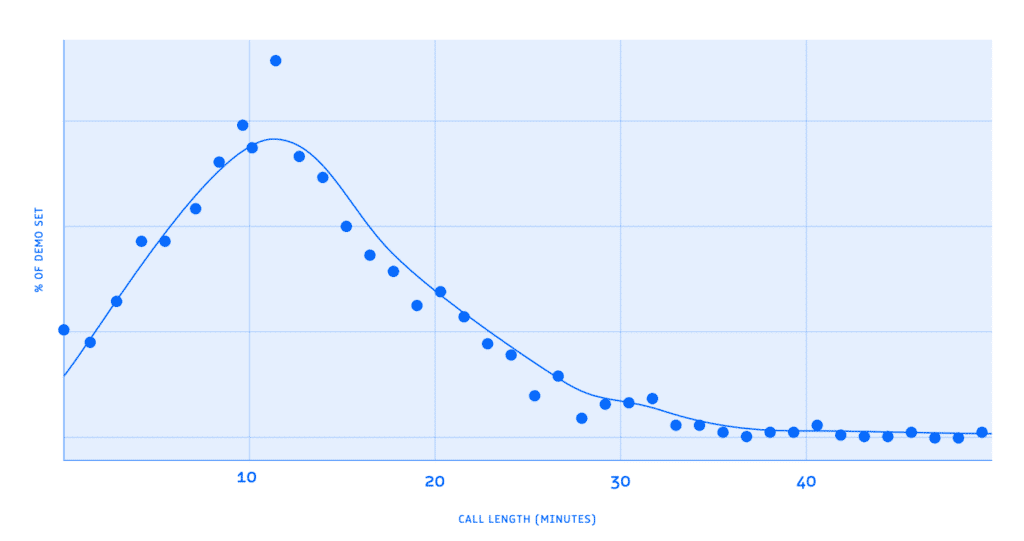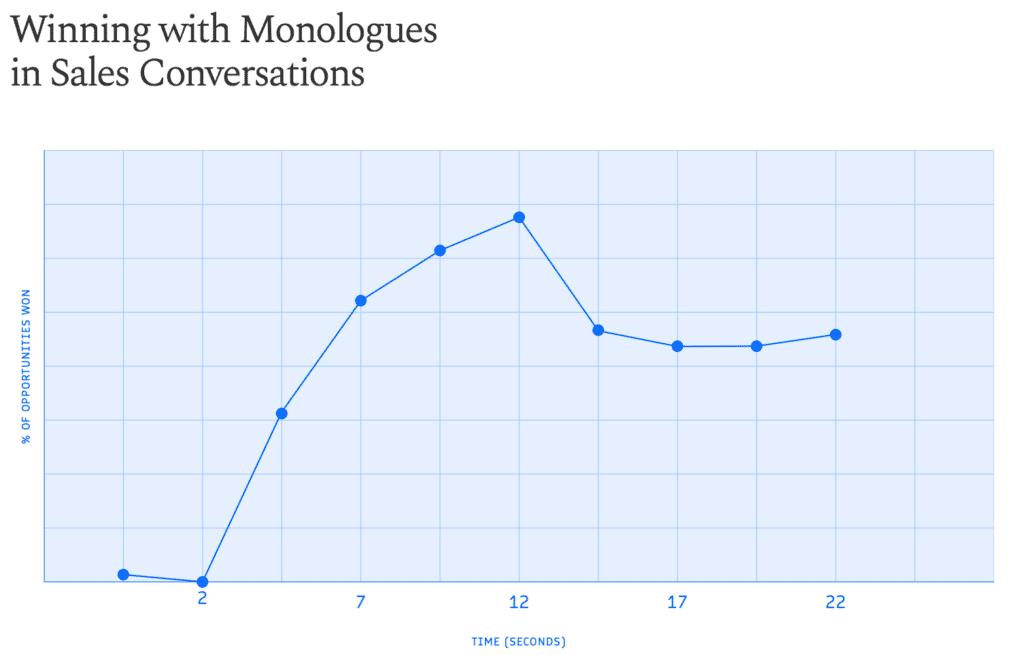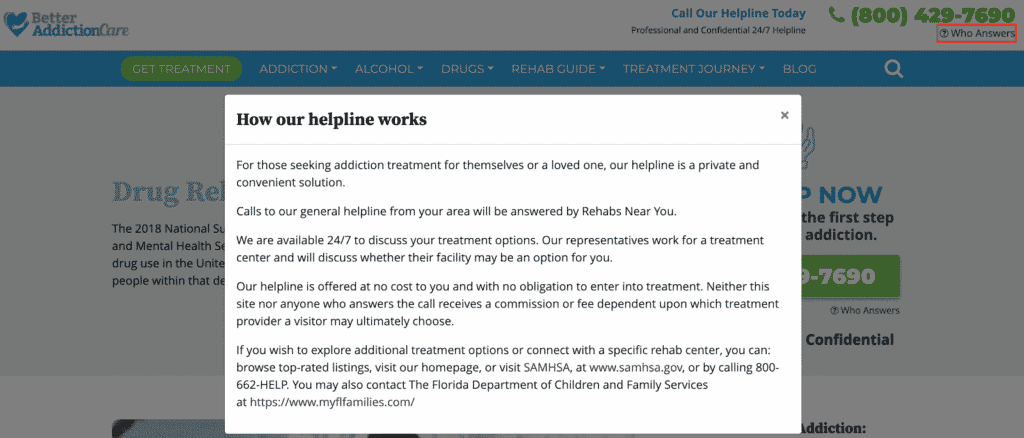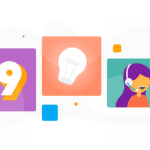Does B2B Cold Calling Work in 2024? 19 Key Tips

As we navigate through 2024, B2B cold calling isn’t just holding its ground; it’s flourishing. Blending tried-and-true methods with fresh strategies opens up a realm of possibilities for businesses eager to broaden their clientele and spur growth.
But, without the right skill set, you’ll fail to get through to the decision-makers you need.
If you truly want to make an impact with your B2B business, read on to discover why B2B cold calling is still worthwhile and learn about the top tactics to improve your success.
Key takeaways:
- Cold Calling Remains Relevant: Despite the rise of digital marketing strategies, cold calling remains a potent tool in B2B sales because it provides a personal, immediate way to connect with potential customers, allowing for tailored conversations and real-time responses.
- Preparation is Key: Understanding the prospect’s business, challenges, and industry trends can significantly increase the chances of a positive response.
- Timing Matters: Identifying the optimal time to make cold calls improves response rates.
- Personalization Wins: Customizing the call to the specific needs and the context of the prospect’s situation can turn a cold call into a warm conversation.
- Embrace Technology: Leveraging new technologies can help sales teams target the right prospects, track progress, and refine strategies for better outcomes.
What is B2B cold calling?
Simply put, cold calling is the process of trying to sell to a prospect who hasn’t previously reached out to your brand or salesperson.
Prior to the call, potential prospects have shown no interest in purchasing the product or service.
This contrasts with warm selling, where prospects may have signed up for a free trial, filled in a lead capture form, or downloaded a guide.
No doubt, cold calling sounds tough. With no customer information to open the sales pitch, sales reps have to quickly find a way to connect with customers to try and initiate a sale.
That doesn’t mean that cold calling is a thing of the past, however. In fact, 82% of buyers will still accept meetings with sellers who proactively reach out.
In this sense, it’s not cold outreach that’s the issue. It’s how you do it.
Discover more about cold calling.
Why B2B cold calling is important in 2024
Its importance is amplified by several key trends and challenges in the sales environment:
- Digital Overload: With the inundation of digital ads and marketing messages, decision-makers are experiencing digital fatigue. Cold calling cuts through the noise, offering a direct, personal touch that digital channels often lack.
- Need for Personalization: As businesses demand more tailored solutions, cold calling provides an opportunity to engage in meaningful, one-on-one conversations that uncover specific customer needs and pain points, allowing for highly personalized service offerings.
- Increased Competition: The B2B marketplace is more competitive than ever, with companies vying for attention in a crowded space. Cold calling enables proactive outreach, helping businesses stand out by initiating direct contact with potential clients.
- Decision-Maker Access: Email and social media messages can easily be overlooked or filtered out, but a well-timed, well-executed cold call can put you directly in touch with key decision-makers, bypassing gatekeepers and digital barriers.
- Rapid Market Changes: The pace of change in market conditions and business needs is accelerating. Cold calling allows sales teams to quickly adapt their approach and messaging in real-time, offering solutions that address the latest challenges faced by businesses.
- Building Trust: The personal connection forged through cold calling can be a key differentiator. Speaking directly with prospects helps build credibility and trust, essential components for long-term business relationships.
- Data-Driven Insights: Advances in CRM and analytics technology enable sales teams to better target their cold calls, using data to identify and prioritize leads that are more likely to convert, making cold calling more efficient.
B2B cold calling in 2024 is above all about building meaningful relationships and delivering personalized value in a way that digital channels alone cannot replicate.
Why is cold calling more successful for B2B than B2C?
Recently, 40% of US B2B (business-to-business) sales teams have transitioned to contactless sales. This means no more face-to-face selling.
Now sales teams are selling exclusively via phone and video conferencing.
Under this new model, 57% of B2B sales professionals are planning on making more sales phone calls, with 39% planning to leverage more cold outreach in this process.
But why does B2B cold calling work better than B2C cold calling?
The main difference between B2B and B2C (business-to-customer) selling lies in the decision-making trigger.
Many B2C sales are made based on emotion.
In B2C contexts, the sales representative often has minimal knowledge about the potential customer, which makes it challenging to ascertain their specific problems.
Consequently, sales personnel are unable to employ a problem-solving approach. Rather, their strategy focuses on evoking emotional responses from individual consumers, aiming to trigger impulse purchases. The effectiveness of this method varies considerably.
Additionally, pinpointing an optimal time to contact prospects presents a challenge. Daytime calls coincide with work hours, while evenings and weekends find people engaged with family activities or seeking relaxation, leaving them uninterested or unavailable for sales discussions.
B2B sales are driven by logical considerations, such as whether a product addresses a company’s needs and fits within its budget.
When contacting a business, B2B sales reps have the advantage of tailoring their approach based on prior research about the company. This preparatory work enhances the likelihood of identifying the business’s potential challenges.
Thus, during the initial contact, the primary task for B2B sales agents is to persuade potential clients of their capability to resolve these issues within the allocated budget.
19 top tips to improve B2B cold calling
We’ve curated 18 top tips to elevate your cold calling efforts. These strategies are tailored to improve your calling efficiency and bolster your confidence.
#1 Research your prospects
As we mentioned, one of the reasons B2B cold calling is a little easier than B2C is that you can carry out preliminary research beforehand. Researching a company helps you customize your pitch, making your product or service seem like the perfect solution they need.

This is why 74% of B2B salespeople use LinkedIn to research a prospect before calling.
#2 Personalize Your Pitch
Through research, you can gain information that enables you to tailor your pitch more effectively. Customize your message based on the research and avoid a one-size-fits-all approach.
Tapping into global trends and economic conditions can also sharpen your pitch, with 88% of sales experts emphasizing how important it is to anticipate customer needs in today’s economic landscape.
Furthermore, top sales achievers often stay abreast of local and national news, a habit that sets them apart from the rest.
#3 Timing Matters
As the old adage says, timing is everything.
In fact, 76% of sales reps say that having the skill to engage the prospect at just the right time has a significant impact on the chance of a conversion.
This is especially true in B2B sales since workers are busy at certain times of the day, and therefore, unavailable.
For example, it’s not smart to call B2B prospects around lunchtime since they won’t be at their desk. But, what time is best?
The best time to make sales calls is between 10 and 11.30 am, and then again at 1.30 pm. This is after the morning rush and as soon as people get back from lunch.
#4 Craft a Strong Opening
A compelling and concise introduction that emphasizes the value of your product or service can immediately grab your prospect’s attention and communicate value to them right away.
Tailoring this opening to address specific challenges or goals of the business you’re calling not only demonstrates your understanding of their needs but also sets the tone for a productive conversation.
Avoid generic introductions; instead, make them relevant to the prospect’s business.
#5 Open the conversation with an email
When you call someone directly, you run the risk of catching them at a bad time.
Instead, try cold email outreach since it’s far less intrusive.
With a cleverly positioned email campaign, you could reach out to your prospects and invite them to a meeting at a time that suits them.
Plus, it’s far easier to grow your email list than to find working phone numbers. Plenty of Chrome extensions, like reply.io, will scrape email data from LinkedIn profiles. Then you can automate the whole outreach process through any cold email software.
Bear in mind that most sales emails are opened at 3 pm. If you want to increase open rates, avoid the morning and shoot for late afternoon instead.
#6 Practice Your Delivery
Speaking confidently and clearly helps people understand your message better. Practicing your pitch, responding to concerns, and improving how you sound can make your presentation more convincing.
This preparation makes you look more professional and increases your chances of making a good impression on potential customers.
#7 Follow a Script but Be Flexible
Improving B2B cold calling means using a script to stay consistent and thorough but being flexible is important.
The script is like a guide, helping you remember what to talk about, but you should also change your approach based on the prospect’s reactions and worries.
Mixing a planned method with the skill to adjust shows you’re attentive and flexible, which can greatly enhance the results of your cold calls.
#8 Use Questions Wisely
Asking thoughtful, open-ended questions helps you learn about a prospect’s needs and challenges, which is essential for customizing your pitch.
This type of questioning not only starts a meaningful conversation but also shows that you care about addressing their unique issues.
#9 Keep it brief
In cold calling, the first call is often also the last.
The aim of the first sales call isn’t likely to be a full sale. It intends to pique interest and move the customer further down the sales funnel.
Figures show that the sales calls that most often result in a demo are less than 15 minutes long — 14.3 minutes to be precise.
Any longer than this, and the demo conversion rate swiftly drops off.
The first sales call could be nudging the lead to schedule a demo of your product or to a further call with decision-makers.

#10 Know when to speak
Top sales reps know the power of using silence wisely in their calls, ensuring it fills no more than 8-10% of the conversation.
This delicate balance keeps the dialogue engaging without turning it into a one-sided affair.
It’s crucial to avoid overwhelming your prospect with a monologue. Instead, aim for a dynamic exchange, allowing space for the prospect to share their thoughts.
Research shows that the most effective sales reps speak for no longer than 12 seconds before letting the customer interrupt.
This approach fosters a more interactive and productive dialogue, setting the stage for meaningful engagement.

#11 Develop Soft Skills and Anticipate Objections
It’s hard to know what your customers are feeling, and some may not be open to sharing. But it’s important to understand their mood on a call so you can respond appropriately. This allows sales reps to adjust their strategy based on customer reactions, learn from any mistakes, and improve.
Teach your team the importance of persistence, resilience, and how to handle rejections gracefully.
#12 Plan Next Steps
Setting actions like planning another meeting, sharing more information, or arranging a product demo helps move the relationship forward.
Having clear next steps maintains momentum and makes sure everyone knows what to do and when making it more likely to build a successful partnership.
#13 Leverage Technology
By leveraging CRM systems, auto-dialers, and analytics tools, you can enhance their calling operations, tailoring conversations with insights from prospect data and assessing the impact of your calls.
This approach not only boosts the number of calls made but also improves their quality, making each interaction more pertinent and captivating for the recipient.
The insights derived from this integrated technology facilitate the fine-tuning of outreach strategies, driving improved conversion rates and fostering more robust customer relationships.
#14 Leverage Technology
It often takes multiple attempts to reach a prospect. Don’t be discouraged by initial rejections or unreturned calls.
Facing rejection is just part of the game, but there’s a smart way to play it: ramp up your call numbers.
To hit the sweet spot in sales success, you should be dialing up at least 60 numbers a day.
Yet, in the world of B2B tech, the reality is a bit different, with sales folks reaching out to about 35 prospects daily. That means they’re missing out on doubling their chances for that successful connection.
Features like the Power Dialer can support you in boosting your call volumes.
#15 Use local numbers
Local numbers help to establish an immediate sense of trust and relatability, which can be a decisive factor in encouraging prospects to engage in conversation. These local numbers make your calls appear more familiar and less intrusive.
People are almost four times more inclined to respond to calls from local numbers. While just 7% are likely to pick up a call from an unknown number with a toll-free area code, this percentage jumps to 27.5% if the unknown number has a local area code.
#16 Use Social Proof
By sharing success stories, testimonials, or case studies from satisfied clients, you demonstrate the tangible impact of your product or service.
This not only builds trust with potential clients during the call but also helps to overcome skepticism, making it easier to advance the conversation towards a successful outcome.
#17 Seek Feedback, Reflect, and Keep Learning
Soliciting insights from prospects on your approach can reveal areas for improvement and opportunities to refine your pitch. Reflecting on what worked well and what didn’t allows for continuous learning and adaptation.
Calling software features such as Call Recording and Call Transcripts are therefore invaluable.
Staying updated with the latest sales techniques, industry trends, and product knowledge enables you to adapt and refine your approach effectively. Embracing a mindset of lifelong learning not only enhances your ability to connect with prospects but also ensures you remain competitive in the ever-evolving landscape of B2B sales.
#18 Warming up leads
Leaning towards “warmer” leads, or those who’ve previously engaged with your company, could boost your success rate.
Tools like Google Analytics or Leadfeeder can reveal who’s been exploring your site, what they’re interested in, and even pinpoint which of your cold-call targets have visited your web pages recently.
With this insight, you’re not just calling blindly; you’re equipped to address potential needs, making each call more personalized and potentially more successful.
#19 Let them come to you
Instead of cold calling, focus on attracting inbound inquiries. Make it more appealing for potential customers to reach out by simplifying and easing the contact process. Take, for instance, a treatment center in Philadelphia that excels in this approach.

By ensuring confidentiality, you boost customer confidence, making them more likely to initiate a call. Additionally, guiding potential callers through the process can further enhance their trust.
Observe how this addiction care service accomplishes this: a simple click on the ‘Who Answers’ button reveals the workings of their helpline, alleviating any hesitations callers might have.

Conclussion
Navigate the shifting terrain of cold calling by leveraging its ability to establish personal connections and trust. These crucial aspects are often absent in digital communication.
To boost your success rate substantially actively employ strategies like crafting personalized pitches and conducting targeted research while timing your calls smartly.
Additionally, embrace technologies such as CRM systems and data analytics, which offer deep insights into optimal calling times and identify the most promising leads, enhancing your cold calling effectiveness.
Increase your sales result with these cold-calling templates
FAQs
u003cstrongu003eWhat is B2B cold calling?u003c/strongu003e
B2B cold calling is a sales technique where businesses reach out to potential business customers who have not previously expressed interest in their products or services. It’s a proactive approach to introduce offerings, generate leads, and build business relationships.
u003cstrongu003eHow to set B2B appointments by cold calling?u003c/strongu003e
To set B2B appointments, follow these steps:u003cbru003e1. u003cstrongu003eResearchu003c/strongu003e: Before calling, research the prospect to personalize your pitch.u003cbru003e2. u003cstrongu003eClear Value Propositionu003c/strongu003e: Start the call with a clear explanation of how your product or service can benefit the prospect.u003cbru003e3. u003cstrongu003eQualifyu003c/strongu003e: Ask questions to qualify the prospect and ensure your offering meets their needs.u003cbru003e4. u003cstrongu003eCall to Actionu003c/strongu003e: Propose a specific time and date for a follow-up meeting or demo, making it easy for the prospect to agree to an appointment.u003cbru003e5. u003cstrongu003eFollow-Upu003c/strongu003e: Send a calendar invite and a summary of what was discussed immediately after the call.
u003cstrongu003eIs B2B cold calling still effective?u003c/strongu003e
Yes, B2B cold calling is still effective, especially when combined with modern sales and marketing strategies. While it’s challenging and requires skill, cold calling can open doors to valuable business relationships and opportunities, particularly when it’s targeted and personalized.
u003cstrongu003eIs B2B cold calling legal?u003c/strongu003e
Yes, B2B cold calling is legal, but it’s subject to various regulations and laws that differ by country and region. Businesses must comply with these laws, which often require maintaining a do-not-call list, respecting opt-out requests, and avoiding misleading practices.




















